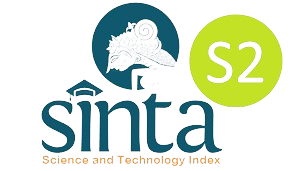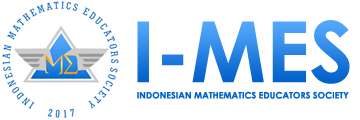Integrating augmented reality with the e-IM3 structured thinking model to enhance problem-solving skills and learning interest in elementary spatial geometry
DOI:
https://doi.org/10.29408/jel.v11i4.32139Keywords:
augmented reality, e-IM3 model, learning interest, problem-solving skillAbstract
This study addresses the need to improve fifth-grade students’ problem-solving skills and learning interest in spatial geometry—a topic often perceived as abstract and challenging—by developing an Augmented Reality (AR)-based instructional medium integrated with the e-IM3 (intelligent, meaningful, mindful, joyful) model. Grounded in the ADDIE framework, the research encompassed the analysis, design, development, implementation, and evaluation phases at SDN Kwadungan Lor, Ngawi, East Java. Initial analysis via diagnostic tests and teacher interviews confirmed low baseline performance and motivation levels. The resulting AR-e-IM3 media underwent expert validation and readability testing, achieving high validity scores (media: 3.79; problem-solving instrument: 3.42; and interest instrument: 3.98). A limited trial (n = 10) and a large-scale trial (n = 32) demonstrated strong practicality (88% and 84.5%, respectively). Effectiveness was evidenced by moderate N-Gain improvements in problem-solving skills (0.58 and 0.51) and learning interest (0.63 and 0.51). These findings indicate that the AR-e-IM3 integration successfully fosters engagement and meaningful learning, aligning with Generation Alpha’s digital learning preferences. This study underscores the potential of technology-enhanced affective–cognitive models in elementary mathematics education. The implications include the scalable adoption of such media to strengthen 21st-century competencies—particularly critical thinking, spatial reasoning, and intrinsic motivation—while supporting curriculum innovation in resource-constrained settings.
References
Abuhassna, H., Alnawajha, S., Awae, F., & Adnan, M. A. B. M. (2024). Synthesizing technology integration within the ADDIE model for instructional design: A comprehensive systematic literature review. Journal of Autonomous Intelligence, 7(5). https://doi.org/10.32629/jai.v7i5.1546
Akbar, A., Herman, T., Suryadi, D., Mursalim, & Alman. (2025). Integrating augmented reality in mathematics learning to improve critical thinking skills of elementary school students. Emerging Science Journal, 9(2). https://doi.org/10.28991/ESJ-2025-09-02-014
Akçayır, M., & Akçayır, G. (2017). Advantages and challenges associated with augmented reality for education: A systematic review. Educational Research Review, 20, 1–11. https://doi.org/10.1016/j.edurev.2016.11.002
Alfitriani, N., Maula, W. A., & Hadiapurwa, A. (2021). Penggunaan media augmented reality dalam pembelajaran mengenal bentuk rupa bumi [The use of augmented reality media in learning about the shapes of the earth]. Jurnal Penelitian Pendidikan, 38(1), 30–38. https://doi.org/10.15294/jpp.v38i1.30698
Anisa, P. M., Saenih, S., Oktaviani, A., Pramuditya, S. A., & Sundawan, M. D. (2024). Developing mathematics virtual reality based on understanding mathematical concepts. Jurnal Elemen, 10(2), 378–394. https://doi.org/10.29408/jel.v10i2.25487
Ariska, M. D., Darmadi, & Murtafiah, W. (2018). Pengembangan media pembelajaran menggunakan adobe flash berbasis metakognisi untuk meningkatkan motivasi belajar matematika [Development of learning media using adobe flash based on metacognition to improve motivation in learning mathematics. Edumatica, 8(1), 83–97. https://doi.org/10.22437/edumatica.v8i01.4622
Arsyad, A. (2019). Media pembelajaran [Learning media]. Rajawali Pers.
Aulia, E. T., & Prahmana, R. C. I. (2022). Developing interactive e‐module based on realistic mathematics education approach and mathematical literacy ability. Journal of Physics: Conference Series.
Bacca, J., Baldiris, S., Fabregat, R., Graf, S., & Kinshuk. (2014). Augmented reality trends in education: A systematic review of research and applications. Educational Technology & Society, 17(4), 133–149. https://doi.org/https://eric.ed.gov/?id=EJ1045535
Billinghurst, M., Clark, A., & Lee, G. (2015). A survey of augmented reality. Foundations and Trends in Human–Computer Interaction, 8(2–3), 73–272. https://doi.org/10.1561/1100000049
Bulut, M., & Borromeo Ferri, R. (2023). A systematic literature review on augmented reality in mathematics education. European Journal of Science and Mathematics Education, 11(3), 556–572. https://doi.org/10.30935/scimath/13124
Cevahir, H., Özdemir, M., & Baturay, M. H. (2022). The effect of animation-based worked examples supported with augmented reality on the academic achievement, attitude and motivation of students towards learning programming. Participatory Educational Research, 9(3), 226–247. https://doi.org/10.17275/per.22.63.9.3
Cheng, K. H., & Tsai, C. C. (2013). Affordances of augmented reality in science learning: Suggestions for future research. Journal of Science Education and Technology, 22(4), 449–462. https://doi.org/10.1007/s10956-012-9405-9
Dede, C. (2009). Immersive interfaces for engagement and learning. Science, 323(5910), 66–69. https://doi.org/10.1126/science.1167311
Dunleavy, M., Dede, C., & Mitchell, R. (2009). Affordances and limitations of immersive participatory augmented reality simulations for teaching and learning. Journal of Science Education and Technology, 18(1), 7–22. https://doi.org/10.1007/s10956-008-9119-1
Feriyanto, F., & Anjariyah, D. (2024). Deep learning approach through meaningful, mindful, and joyful learning: a library research. European Journal of Educational and Social Science, 5(2), 208–212. https://doi.org/10.33122/ejeset.v5i2.321
Flavin, E., Hwang, S., & Flavin, M. T. (2025). Augmented reality for mathematics achievement: A meta-analysis of main and moderator effects. International Journal of Science and Mathematics Education. https://doi.org/10.1007/s10763-025-10546-x
Gargrish, S., Mantri, A., & Kaur, D. P. (2020). Augmented reality-based learning environment to enhance teaching-learning experience in geometry education. Procedia Computer Science, 172, 1039–1046. https://doi.org/10.1016/j.procs.2020.05.152
Garzón, J., & Acevedo, J. (2019). Meta-analysis of the impact of augmented reality on students’ learning gains. Educational Research Review, 27, 244–260. https://doi.org/10.1016/j.edurev.2019.04.001
Hake, R. R. (1998). Interactive-engagement vs. traditional methods: A six-thousand-student survey of mechanics test data for introductory physics courses. American Journal of Physics, 66(1), 64–74. https://doi.org/10.1119/1.18809
Hetmanenko, L. (2024). The role of interactive learning in mathematics education: fostering student engagement and interest. Multidisciplinary Science Journal, 6, 2024 0733. https://doi.org/10.31893/multiscience.2024ss0733
Höfrová, A., Balidemaj, V., & Small, M. A. (2024). A systematic literature review of education for Generation Alpha. Discover Education, 3. https://doi.org/10.1007/s44217-024-00218-3
Hsiao, H. S., Lin, C. Y., Chen, J. C., & Peng, Y. F. (2018). The influence of a mathematics problem-solving training system on first-year middle school students. Eurasia Journal of Mathematics, Science and Technology Education, 14(1), 77–93. https://doi.org/10.12973/ejmste/77902
Ibáñez, M. B., & Delgado-Kloos, C. (2018). Augmented reality for STEM learning: A systematic review. Computers & Education, 123, 109–123. https://doi.org/10.1016/j.compedu.2018.05.002
Khairunnisa, G. (2024). Optimalisasi pembelajaran: Panduan digitalisasi bahan ajar bagi guru di SDN 03 Situjuah Banda Dalam [Optimising learning: A guide to digitising teaching materials for teachers at SDN 03 Situjuah Banda Dalam] (Vol. 3). Jurnal Pendidikan, Sosial Humaniora. https://doi.org/10.30640/dewantara.v3i2.2537
Khotimah, D. F. K., & Hafidz. (2025). Pengembangan media pembelajaran kreatif dan interaktif melalui teknologi informasi dan komunikasi (TIK) dalam pendidikan [Development of creative and interactive learning media through information and communication technology (ICT) in education]. IHSAN : Jurnal Pendidikan Islam, 3(1), 1–8. https://doi.org/10.61104/ihsan.v3i1.433
Koirala, H. P., Davis, M., & Johnson, P. (2008). Development of a performance assessment task and rubric to measure prospective secondary school mathematics teachers’ pedagogical content knowledge and skills. Journal of Mathematics Teacher Education, 11(2), 127–138. https://doi.org/10.1007/s10857-007-9067-3
Kolil, V. K., Prasanna, P. S., & Achuthan, K. (2025). The role of integrating augmented reality and cognitive constructivism in enhancing sustainable education. Education and Information Technologies. https://doi.org/10.1007/s10639-025-13799-9
Kusuma, D. A., Ruchjana, B. N., Widodo, S. A., & Dwipriyoko, E. (2024). Combination of ethnomathematics and the mozart effect to improve problem-solving skills and mathematical disposition. BAREKENG J Ilmu Matematika dan Terapan, 18(2), 1155–1166. https://doi.org/10.30598/barekengvol18iss2pp1155-1166
Lestari, E. A., & Karlimah. (2017). Komunikasi matematis siswa kelas V sekolah dasar tentang sifat-sifat bangun ruang [Mathematical communication of fifth-grade primary school students about the properties of spatial figures. Pedadidaktika: Jurnal Ilmiah Pendidikan Guru Sekolah Dasar, 4(2), 119–128. https://doi.org/https://ejournal.upi.edu/index.php/pedadidaktika/article/view/9341
Masfingatin, T., Apriandi, D., Murtafiah, W., Suprapto, E., & Lusiana, R. (2024). Exploring decision-making prospective mathematics teacher in solving geometric proof problems. Jurnal Elemen, 10(1), 105–120. https://doi.org/10.29408/jel.v10i1.23177
Mayer, R. E. (2009). Multimedia learning (2nd ed.). Cambridge University Press.
Mesghina, A., Vollman, E., Trezise, K., & Richland, L. E. (2024). Worked examples moderate the effect of math learning anxiety on children’s math learning and engagement during the COVID-19 pandemic. Journal of Educational Psychology, 116(2), 173–194. https://doi.org/10.1037/edu0000795
Molenda, M. (2003). In search of the elusive ADDIE model. Performance Improvement, 42(5), 34–37.
Murtafiah, W. (2024). E-IM3 learning model for developing junior high school students’ decision-making ability in solving number pattern problems. AIP Conference Proceedings, 3148(1), 40049. https://doi.org/10.1063/5.0185472
Navarrete, J., Giaconi, V., Contador, G., & Vazquez, M. (2024). Another reason why normalized gain should continue to be used to analyze concept inventories (and estimate learning rates. https://arxiv.org/abs/2407.07730v1
Nizami, A. W., & Mahmudi, A. (2018, 2018). Problem-solving-based learning to improve students’ learning interest AIP Conference Proceedings, https://doi.org/10.1063/1.5054450
http://dx.doi.org/10.1063/1.5054450
Pangestu, I. A., & Ruqoyyah, S. (2023). Pembelajaran daring materi bangun ruang pada siswa kelas V SD menggunakan pendekatan Realistic Mathematics Education (RME. Creative of Learning Students Elementary Education (Journal of Elementary Education, 6(2), 228–236. https://doi.org/https://journal.unesa.ac.id/index.php/CLSEE/article/view/22732
Radu, I. (2014). Augmented reality in education: A meta-review and cross-media analysis. Computers & Education, 68, 153–169. https://doi.org/10.1016/j.compedu.2013.07.020
Rahayu, L. D., & Kusuma, A. B. (2019). Peran pendidikan matematika di era globalisasi [The role of mathematics education in the era of globalisation. Prosiding Sendika, 5(1), 534–541. https://doi.org/http://eproceedings.umpwr.ac.id/index.php/sendika/article/view/801
Rahman, N. A., Rosli, R., Rambely, A. S., & Halim, L. (2022). Mathematics teachers’ practices of STEM education: A systematic literature review. European Journal of Educational Research, 11(2), 859–872. https://doi.org/10.12973/eu-jer.10.3.1541
Richardo, R., Nugroho, A., & Wijayanti, L. (2023). The use of augmented reality to improve students’ spatial visualization and motivation in learning geometry. International Journal of Instruction, 16(1), 307–324. https://doi.org/10.29333/iji.2023.16117a
Ruseffendi, E. T. (2005). Dasar-dasar matematika sekolah 2 [School mathematics basics 2]. . Tarsito.
Safei, N. A., Ismail, M., Syamsudduha, S., & Mustami, M. (2019). Validity, practicality, and effectiveness development of biology textbooks integrated with augmented reality on high school students. International Journal of Technology Enhanced Learning, 11, 187. https://doi.org/10.1504/IJTEL.2019.10018869
Santos-Trigo, M. (2024). Problem solving in mathematics education: tracing its foundations and current research-practice trends. ZDM – Mathematics Education, 56(2), 211–222. https://doi.org/10.1007/s11858-024-01578-8
Schmid, R., Pauli, C., & Petko, D. (2023). Examining the use of digital technology in schools with a school-wide approach to personalized learning. Educational Technology Research and Development, 71((April 2023), 367–390. https://doi.org/10.1007/s11423-022-10167-z
Schutera, S., Schnierle, M., Wu, M., Pertzel, T., Seybold, J., & Bauer, P. (2021). On the potential of augmented reality for mathematics teaching with the application cleARmaths. Education Sciences, 11(8), 2–18. https://doi.org/10.3390/educsci11080368
Scott, C. L. (2015). The futures of learning 2: What kind of learning for the 21st century? ERF Workin). UNESCO Education Research and Foresight.
Setiawan, A., & Nurfadilah, L. (2024). Pengembangan media pembelajaran matematika berbasis augmented reality untuk meningkatkan hasil belajar siswa SMP [Development of augmented reality-based mathematics learning media to improve junior high school students’ learning outcomes. Jurnal Pendidikan Matematika dan Sains, 10(1), 80–91. https://doi.org/10.33369/jpms.v10i1.4028
Shakeel, S. I., Al Mamun, M. A., & Haolader, M. F. A. (2023). Instructional design with ADDIE and rapid prototyping for blended learning: Validation and its acceptance in the context of TVET Bangladesh. Education and Information Technologies, 28, 7601–7630. https://doi.org/10.1007/s10639-022-11471-0
Sotiriou, S. A., & Bogner, F. X. (2008). Visualizing the invisible: Augmented reality as an innovative science education scheme. Advanced Science Letters, 1(1), 114–122. https://doi.org/10.1166/asl.2008.012
Spatioti, A. G., Kazanidis, I., & Pange, J. (2022). A comparative study of the ADDIE instructional design model in distance education. Information, 13(9), 402. https://doi.org/10.3390/info13090402
Susanto, E., Susanta, A., Aliyyah Irsal, N., & Stanggo, P. D. (2024). Developing RME-based module in statistics to improve problem-solving skills for higher education students. Jurnal Elemen, 10(2), 289–304. https://doi.org/10.29408/jel.v10i2.25157
Trilaksono, D., Darmadi, D., & Murtafi'ah, W. (2018). Pengembangan media pembelajaran matematika menggunakan adobe flash professional berbasis literasi untuk meningkatkan kreativitas siswa [Development of mathematics learning media using adobe flash professional based on literacy to enhance student creativit. AKSIOMA: Jurnal Program Studi Pendidikan Matematika, 7(2), 180. https://doi.org/10.24127/ajpm.v7i2.1428.
Ziatdinov, R., & Cilliers, E. (2021). Generation alpha: Understanding the next cohort of university students. European Journal of Contemporary Education, 10, 783–789. https://doi.org/10.13187/ejced.2021.3.783
Zimmerman, B. J. (2002). Becoming a self-regulated learner: An overview. Theory into practice, 41(2), 64–70. https://doi.org/10.1207/s15430421tip4102_2
Downloads
Published
How to Cite
Issue
Section
License
Copyright (c) 2025 Abas Maulana, Wasilatul Murtafiah, Jeffry Handhika, Joel I. Alvares

This work is licensed under a Creative Commons Attribution-ShareAlike 4.0 International License.
Authors who publish with the Jurnal Elemen agree to the following terms:
- Authors retain copyright and grant the journal right of first publication with the work simultaneously licensed under Creative Commons Attribution-ShareAlike 4.0 International License (CC BY-SA 4.0).
- Authors are able to enter into separate, additional contractual arrangements for the distribution of the journal's published version of the work (e.g., post it to an institutional repository or publish it in a book), with an acknowledgment of its initial publication in this journal.
- Authors are permitted and encouraged to post their work online (e.g., in institutional repositories or on their website) prior to and during the submission process, as it can lead to productive exchanges, as well as earlier and greater citation of published work.
Jurnal Elemen is licensed under a Creative Commons Attribution-ShareAlike 4.0 International License





